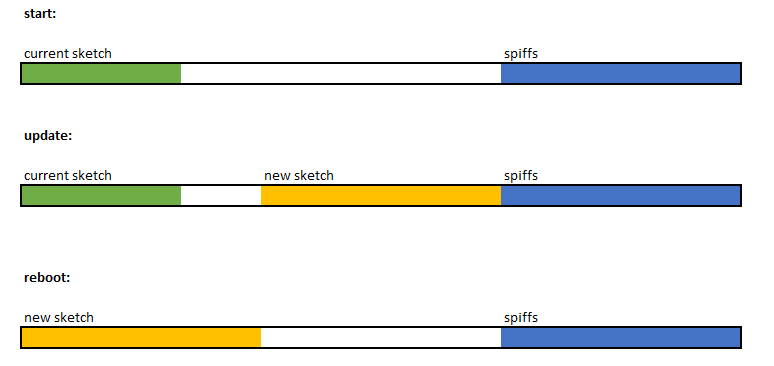The world is full of funny coincidences... after sometime thinking about this i had finally started looking into this last night as well.
I presume you are using a little DNS trickery and setting up a websocket which issues the update command (along with custom url). One thing to note is that i don't believe with standard tools you can update the bootloader OTA (but maybe you can by directly overwriting the flash... it wouldn't be 'safe' from possible corruption - but in this case the only thing that could happen is to have to flash it via serial which is where we have come from anyway).
I think the first question to determine is which bootloader they are using - using esptool i believe you can dump flash from an arbitrary memory location maybe we can get some clues on their bootloader.
PS: The latest firmware that i sniffed an upgrade to (2.0.2) seems to use SSL end to end for the websockets so this could close this avenue in the future if they start shipping with newer firmware
PPS: From sniffing it would also be possible to maintain compatibility with the ewelink app infrastructure so devices could be controlled by both mqtt and the ewelink - not sure if that would be usefull for anyone..?



This is slightly off-topic, however -- in case my poor google skills didn't leave me in the lurch and indeed nobody managed to do so before -- might ease flashing the Tasmota supported itead/sonoff devices without HW/serial access.
I took a closer look at the original firmware, reversed engineered a few pieces and implemented a basic server which can communicate with the Sonoff devices (basically a subset of what the amazon services are doing for itead). Goal is to use the original internal upgrade mechanism to flash custom firmware onto the devices without opening them, attaching a serial cable, potential soldering, pulling down GPIO0, you know the game...
By now I managed to trick a Sonoff device to download a custom FW from servers under my control, passing the verification, and eventually flashing the image. That's some fair progress, however the device doesn't boot.
My first naive try consisted of providing a sonoff.ino.bin instead of the original upgrade file the device would usually fetch. Then I noticed, the original upgrade image doesn't contain the bootloader section, so I chopped off the first 0x1000 bytes. Still, the device doesn't boot.
That could mean that a) the original bootloader can't load the tasmota firmware (e.g. tasmota requires a modified bootloader to be loaded appropriately)? b) the internal upgrade mechanism expects a different image format
After some research I figured the original FW uses the Espressif OTA functionality. This apparently makes use of some Ping-Pong, meaning, it splits the usable flash and always flashes the inactive part. That also matches with the requests for files named "user1.bin" and/or "user2.bin".
Those -- the original upgrade files -- start with (HEX): EA 04 00 01 04 00 10 40 The Tasmota built starts with (HEX at offset 0x1000): E9 04 02 00 04 00 10 40
As you can see, the first 4 Bytes don't match, while the second 4 Bytes do. The Tasmota image header matches the Espressif documentation[1] about how an image should like (always starting with E9).
I couldn't find any documentation on what the image header in the original upgrade images is supposed to represent.
Long story short: If case b) applies ("the internal upgrade mechanism expects a different image format"), what is the that image format / header and (how) could build I build a Tasmota FW matching that image format criteria? If a) applies ("the original bootloader can't load the tasmota firmware"), can we workaround that somehow, at least for an intermediate image providing the Tasmota OTA functionality?
[1]http://www.espressif.com/sites/default/files/esp8266-sdk_application_note_firmware_download_protocol_en.pdf